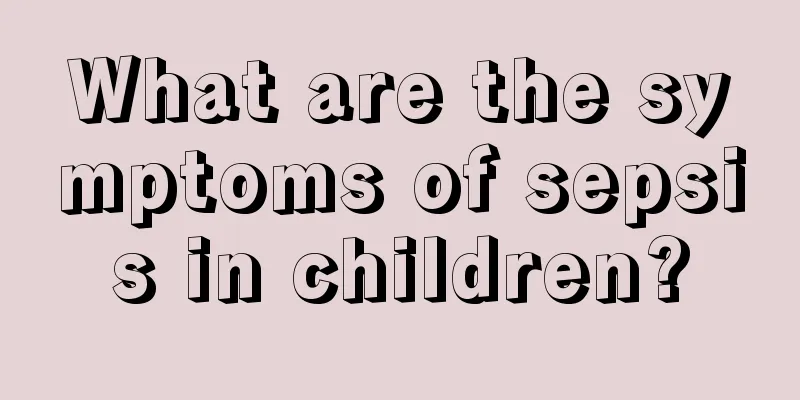Can low platelet count in children be cured?

|
Low platelet count in children is usually a symptom of pediatric low platelet count. If the degree of low platelet count is not very serious, it will generally get better slowly without treatment. If a child's platelet count is seriously low and blood spots appear in the body, he or she must go to the hospital for treatment. Usually, a combination of immunoglobulin and hormones will be used for treatment. The child can also be treated according to Chinese medicine methods such as nourishing the liver and kidneys. Treatment of low platelet purpura in children If a child has thrombocytopenia, we must first see the extent of the reduction. If it is only a slight reduction and the total number is above 80, this is generally not a problem and will slowly recover. However, if the thrombocytopenia is severe and bleeding spots appear all over the body, this is thrombocytopenic purpura, which is more troublesome and requires hospitalization in the hospital, and the use of immunoglobulin and hormones must be used during the treatment. Or, syndrome differentiation and treatment can be carried out according to blood syndrome. The main pathogenesis is heat, deficiency and stasis. The treatment should focus on clearing heat, cooling blood, stopping bleeding, replenishing qi and yin, and promoting blood circulation and removing stasis. At the same time, methods such as tonifying the liver and kidneys should be used to treat both the symptoms and the root cause. Can low platelet count in children be cured? 1. To identify the cause and solve the problem of low platelets, we must first know what causes the child's low platelets. Different causes require different treatments. 2. Use hormones sparingly. Glucocorticoids for mild cases and large doses of immunoglobulin G for severe cases are commonly used drugs for the treatment of low platelets in many general hospitals. However, for children, the toxic side effects of hormones are too great. Giving them to children at adult doses will have a serious impact on their subsequent physical development and the recurrence rate is also relatively high. Therefore, it is clinically recommended to use hormones sparingly. 3. If the child's platelet count is greater than 30 and there is no bleeding tendency, he should be observed temporarily without treatment and can go to the hospital for regular blood tests. If the platelet count is between 20-30, it depends on the degree of bleeding in the child. Treatment should be given for severe bleeding. If the platelet count is less than 20, correct treatment should be given immediately. The most common manifestation of thrombocytopenia 1. Acute type: Symptoms of thrombocytopenia are common in children, accounting for 90% of the cases of immune thrombocytopenia, and the incidence rate is similar in boys and girls. 84% of patients have a history of respiratory or other viral infections 1 to 3 weeks before the onset of thrombocytopenia symptoms. Therefore, the disease is most common in autumn and winter, with an acute onset and may be accompanied by fever, chills, and purpura of the skin and mucous membranes. If the patient has a headache or vomiting, be alert to the possibility of intracranial hemorrhage. The course of the disease is mostly self-limiting, with more than 80% of cases resolving on their own, and the average course of the disease is 4 to 6 weeks. A few cases may linger or become chronic over several years. The acute form accounts for less than 10% of ITP in adults. 2. Chronic type: The symptoms of thrombocytopenia are very complex. This type is common in young women, with the incidence rate in women being 3 to 4 times that in men. The onset is insidious, the symptoms of thrombocytopenia are mild, and bleeding often recurs, each lasting from several days to several months. The degree of bleeding is related to the platelet count. If the platelet count is >50×10^9/L, it is often bleeding after injury. If the platelet count is between (10 and 50)×10^9/L, there may be varying degrees of spontaneous bleeding. If the platelet count is less than 10×10^9/L, there is often severe bleeding. Except for the bleeding symptoms, the patient's general condition is good. |
<<: How to treat a child's knee abrasion
>>: What to do if your child is weak and sweats a lot
Recommend
Why does a one-year-old baby spit up milk?
The baby is one year old. Many of the baby's ...
Why do children wake up easily when sleeping?
Parents who just had a baby know that babies are ...
What to do if your child has abdominal lymphadenitis
Many children have lymph node inflammation, which...
How tall should a six-month-old baby be?
Generally speaking, whether a baby's growth a...
What to do if your child is too lazy?
With the continuous improvement of living standar...
What to do if your child is very rebellious
When reaching adolescence, every child is likely ...
What to do if your child has watery stools
The symptom of loose watery stools in infants may...
What should I do if my baby hasn't had a bowel movement for five days?
Babies do not have much ability to express themse...
The gap between the front teeth of the child is large after the replacement of teeth
Our teeth are neatly arranged one next to the oth...
What to do if children have high uric acid
We often see high uric acid in middle-aged and el...
What is the reason for white tongue coating in children?
If a child has a white tongue coating, there may ...
What should I do if my child has a fever repeatedly at night?
What should we do if our children have repeated f...
Is it good for baby and child swimming?
I believe that many parents will take their babie...
What is the best way to prevent bronchial asthma in children?
Children are always vulnerable. They need our tim...
What exactly is going on when a child holds his breath?
Some babies are fine when they are born, but sudd...









